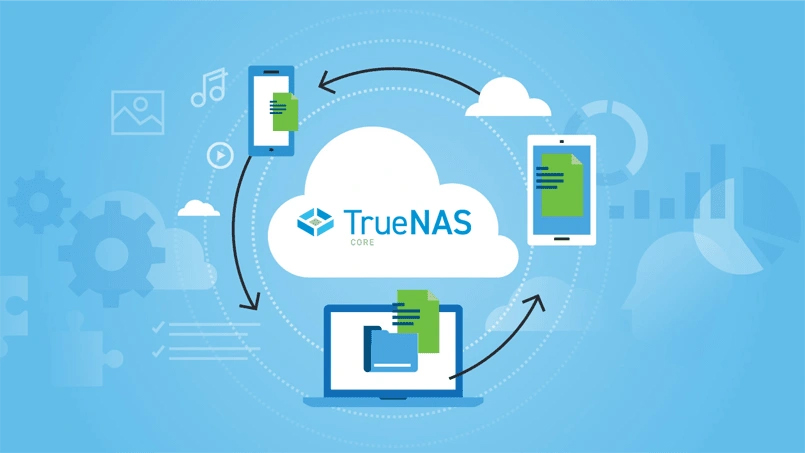What is FreeNAS, ZFS and TrueNAS?



Since 2020, FreeNAS has been known as TrueNAS Core, and is available for download from the TrueNAS website. There are several key differences between the renamed TrueNAS product solutions to be aware of:
FreeNAS is the world’s number 1 storage OS with over 10+ Million Downloads, it includes Enterprise-Grade Features is built on Open Source (OpenZFS) and is BSD licensed.
ZFS is an enterprise-ready open source file system, RAID controller, and volume manager with unprecedented flexibility and an uncompromising commitment to data integrity. It eliminates most, if not all of the shortcomings found in legacy file systems and hardware RAID devices. Once you go ZFS, you will never go back.
TrueNAS systems are fully supported, based on the same open source technology which makes FreeNAS so great and offer a unmatchable level of availability by utilising Dual Controllers, ZFS, rigorous build processes and much more.

Copy-on-Write
ZFS keeps your data safe. Utilising Copy-on-Write technology, ZFS does not change the location of data until a write is completed and verified. This ensures that your data isn’t lost during a interrupted task such as a power outage.
ZFS uses a 256-bit hash of the data in a file system block, known as a checksum. This checksum ensures data integrity during writes. The way it handles and tests writes means that each write is tested, eliminating storage degradation such as bitrot. It also eliminates the write hole which allows for silent data corruption within RAID.
RAID
Striped VDEV’s, Mirrored VDEV’s and Striped Mirrored VDEV’s are essentially the same as RAID0, RAID1 and RAID10 accordingly with one difference; automatic check summing prevents silent data corruption that is otherwise usually undetectable by most hardware RAID cards.
RAIDZ is the very similar to RAID5 but without the wrote hole penalty that is often encountered with RAID5. RAIDZ2 is the same as RAIDZ but with double parity to tolerate multiple disk failures (RAID6) and RAIDZ3 allows for a third parity point to allow for three drive failures.
Scalable
ZFS can handle enormous data pools of up to 1.84 x 10^19 times more data than other 64bit systems such as BTRFS as it uses a 128-bit file system. It’s designed to allow for capacity that far outreaches that which would be used in the real world to ensure you don’t have to be concerned with scalability.
Intelligent
ZFS sends writes to individual physical disks rather than just a RAID volume. This allows for stripe writes across RAID volumes and can perform synchronous writes to speed up performance. This model also ensure there are no long waits for file system checks.
ZFS incorporates algorithms to make sure your Most Recently Used (MRU) and Most Frequently Used (MSU) data are stored in your fastest system storage media. Utilizing MRU & MSU combined with flash/NVDIMM ZILs/SLOGs and ARC/L2ARC devices, you can speed up your performance astronomically.
Conclusion
ZFS is a scalable, mature and incredibly secure file system that is built to last. It has many intelligent features and as it’s based on open source it has many different granular tweaks and functions that are available due to many individuals and organisations contributing to the development and testing of it. While ZFS can seem complex, the TrueNAS UI helps to simplify that to ensure that your experience with the platform is straightforward and seamless
We've deployed TrueNAS into many sectors, each customer having a wildly different but complex business case. Seeing TrueNAS in action, as well as organising proof of concepts has been instrumental in demonstrating the outstanding performance of these solutions. If you'd like to know more, contact us.